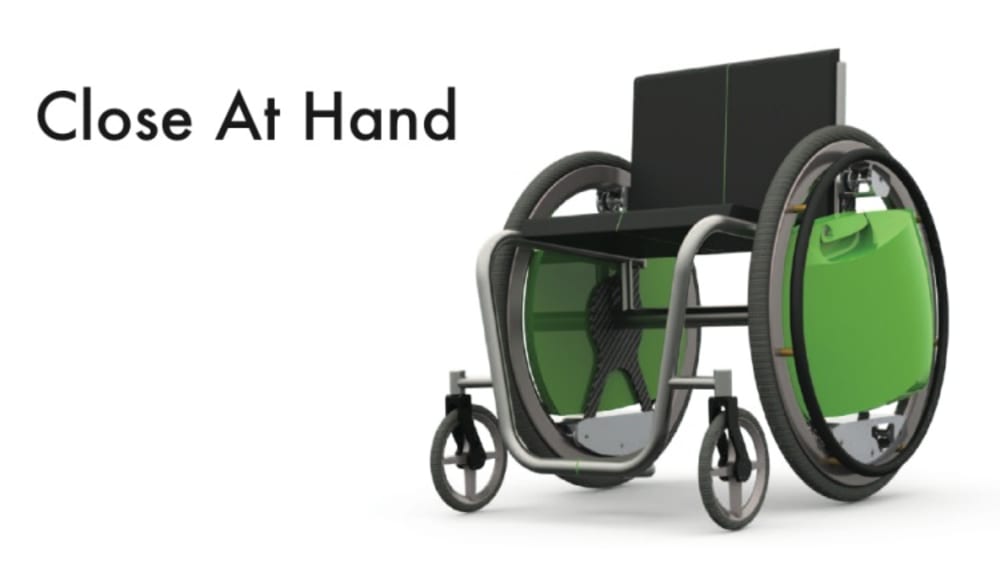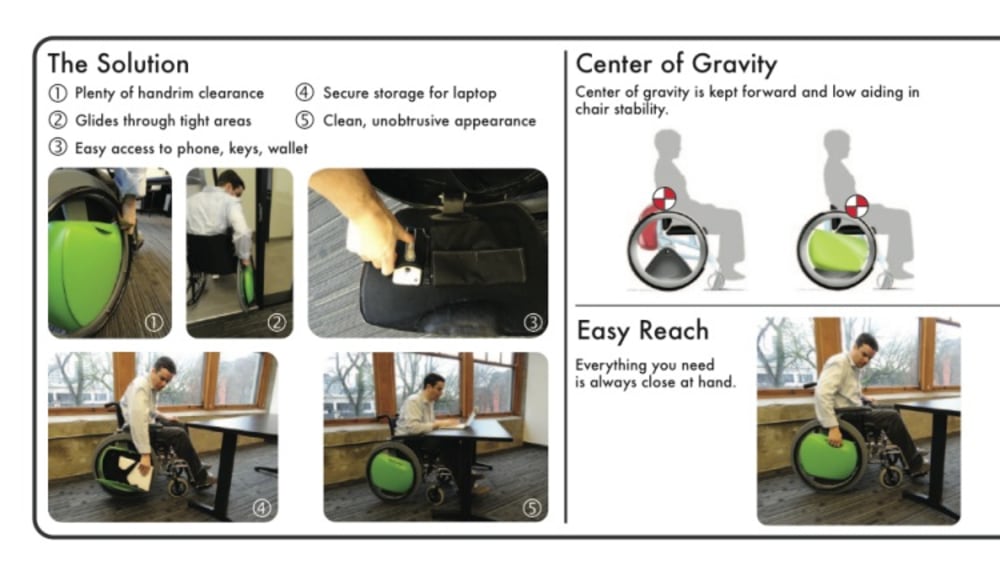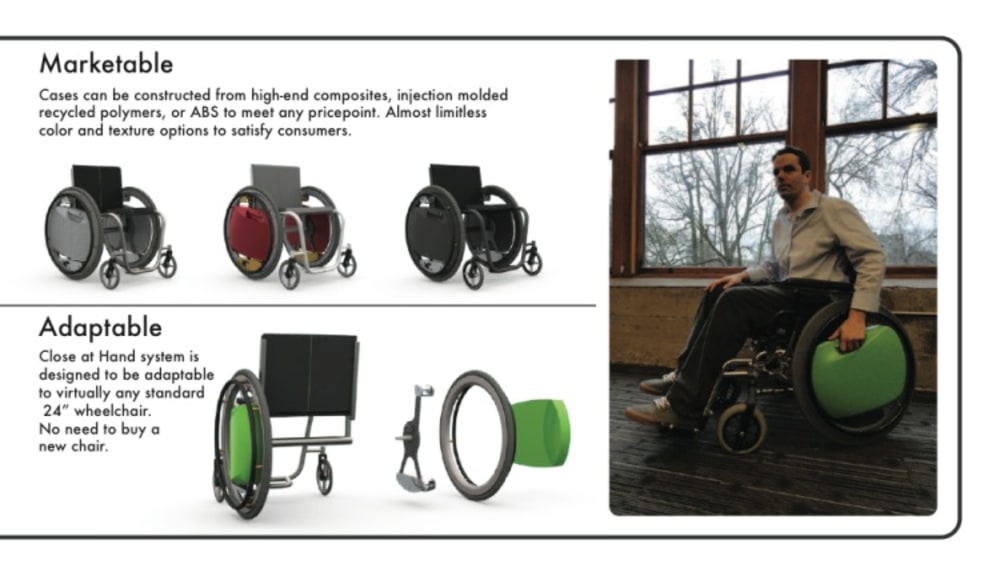There are over 2 million wheelchair users in the United States, the vast majority of whom use manual wheelchairs. While development of manual chairs in areas such as weight and comfort have continued, development for convenience and utility have languished.
Consideration for how an individual carries all of the things that able bodied people take for granted: cell phones, computers, cameras, keys, and wallets/purses, has been confined to 'accessory' products. Many wheelchair users choose to carry less or are forced to use awkward, or even dangerous, solutions such as backpacks to carry their items. Backpacks require strenuous and uncomfortable twist and reach movements in order to access its contents. They can also move the center of gravity of the chair up and to the rear creating stability problems when negotiating inclines or off-camber situations such as cross walk ramps. Backpacks also lack security for their contents while residing in the most out of sight location possible...behind your back!
My Close at Hand concept seamlessly integrates the things we all choose to carry into the lives of those with limited mobility. The system consists of two lockable, waterproof hard cases that reside within the wheel area of the chair, requiring a 'hubless' wheel. Hubless wheels have been developed for recreational use and are suitable for human powered devices. The concept starts with a series of small rollers on which the rim and wheel rotate, allowing the case to remain upright while the wheel and handrim rotate around it. These rollers are attached to a frame that locates the wheel on whichever conveyance is being developed. The hard cases attach to the frame of the wheel system using lockable and quick release mounts similar to what you find on motorcycle luggage making the cases very easy to remove. Each case can be locked onto the mount as well as locked closed providing the most security possible. Both functions are performed with a single key and with one lock per case to add convenience and lower complexity. Much consideration has been given to the shape of the cases as they allow full access to the handrim for proper control and propulsion of the wheelchair by the user. Each case has interior pockets to securely carry many common items.
The cases can be formed using fiber reinforced plastics, commonly referred to as carbon-fiber, kevlar, and fiberglass. Injection molding or vacuum forming are also possibilities that open up a wide selection of polymers and recycled materials. Materials and finish can be changed to appeal to a wide range of users.
The design of the wheel and case system would allow it to be retro-fit to most standard 24” wheelchairs. This would make it a much less expensive proposition to purchase than having a dedicated wheelchair designed around this case and wheel system. A person would simply replace their existing wheels with the Close at Hand system and be ready to enjoy the convenience and security that comes with it.
Like this entry?
-
About the Entrant
- Name:Patrick Scranton
- Type of entry:individual
- Software used for this entry:Rhinoceros, Photoshop, Illustrator, PhotoView 360
- Patent status:none








